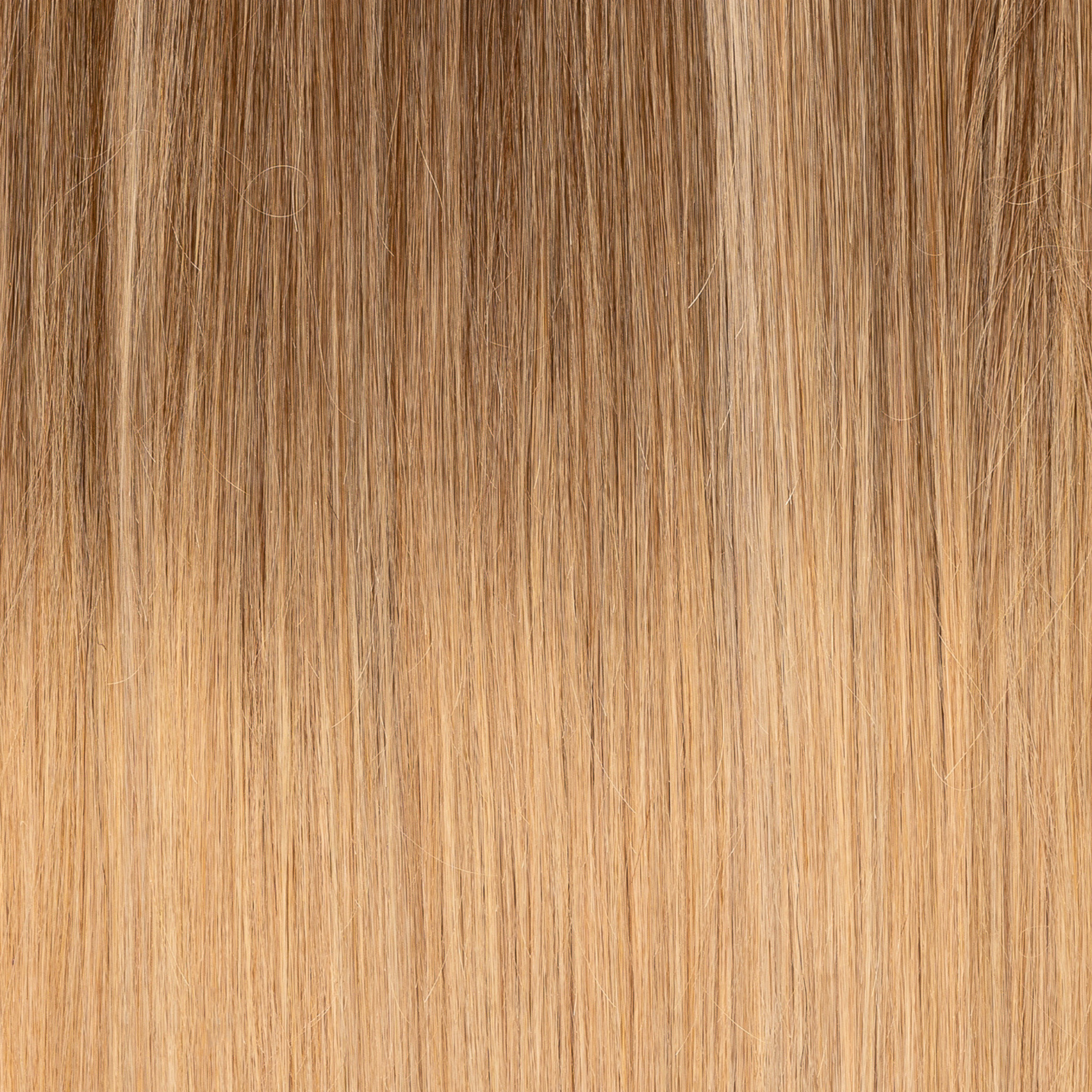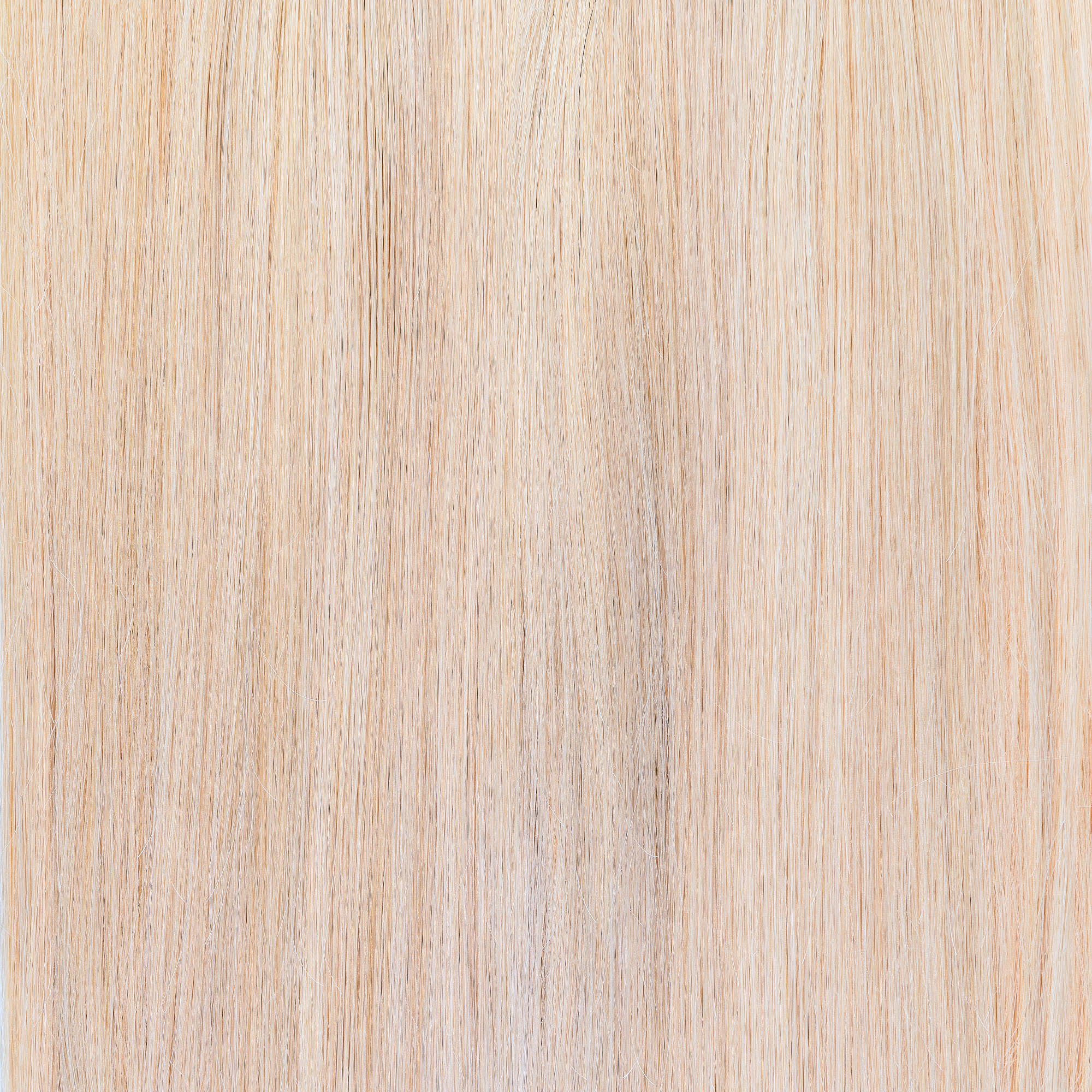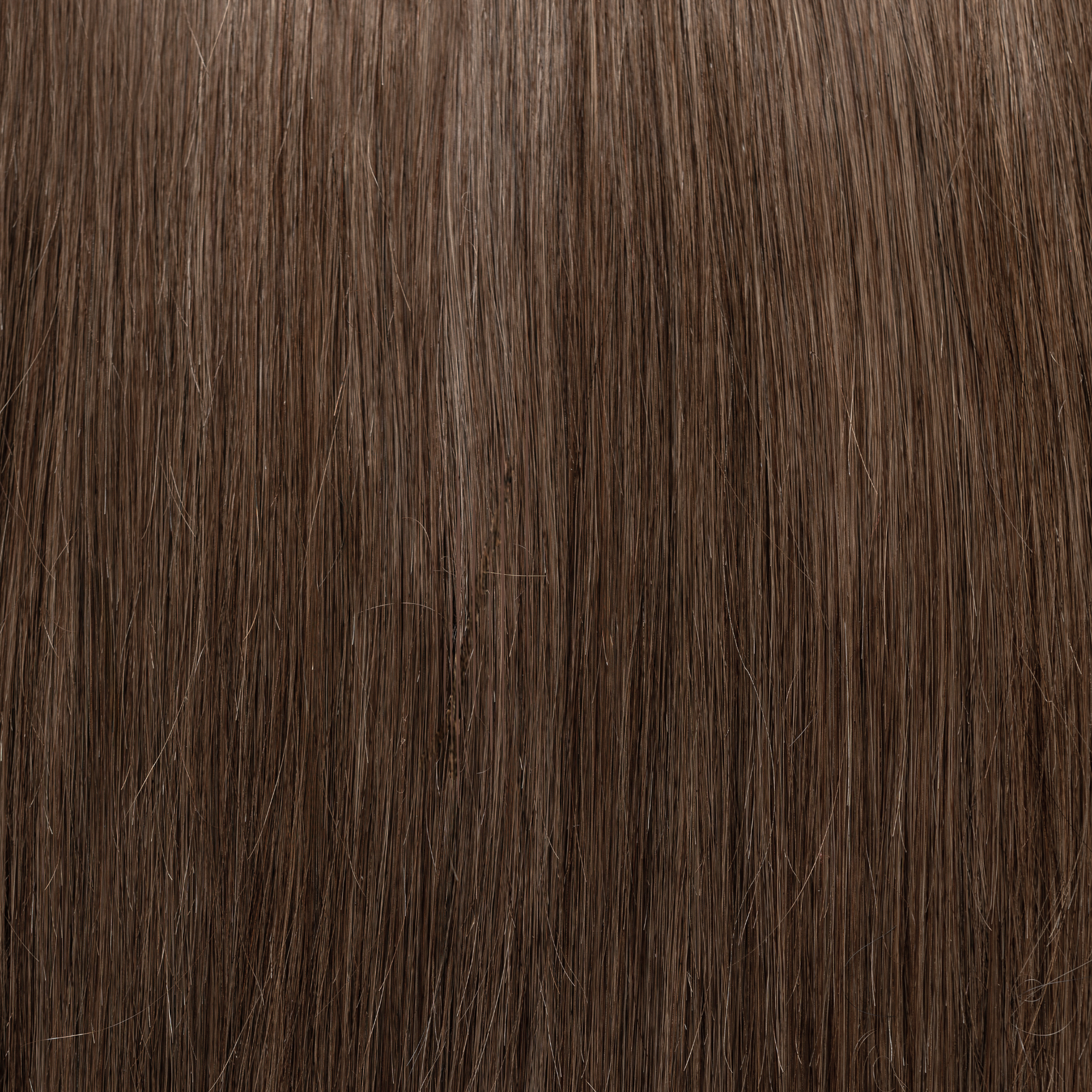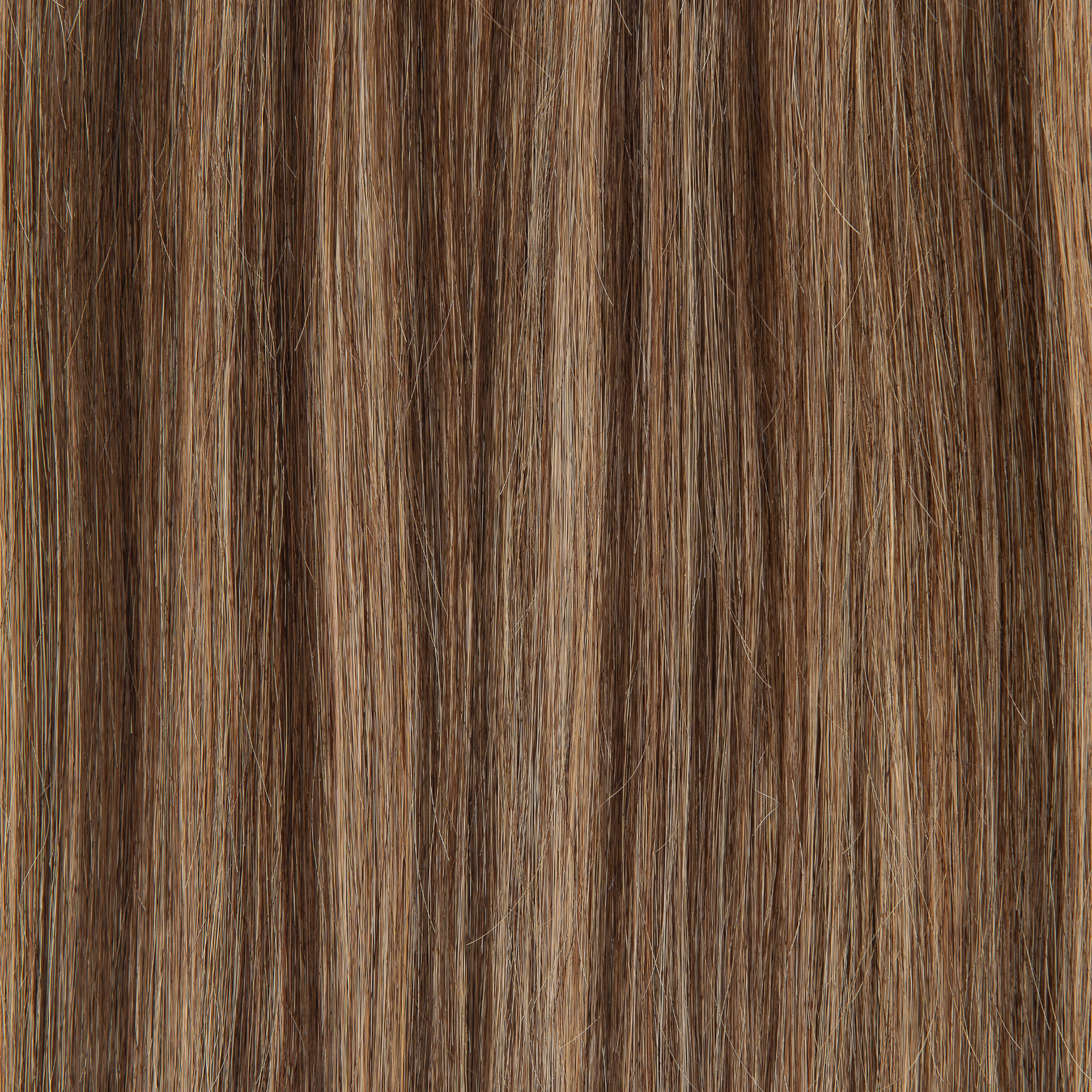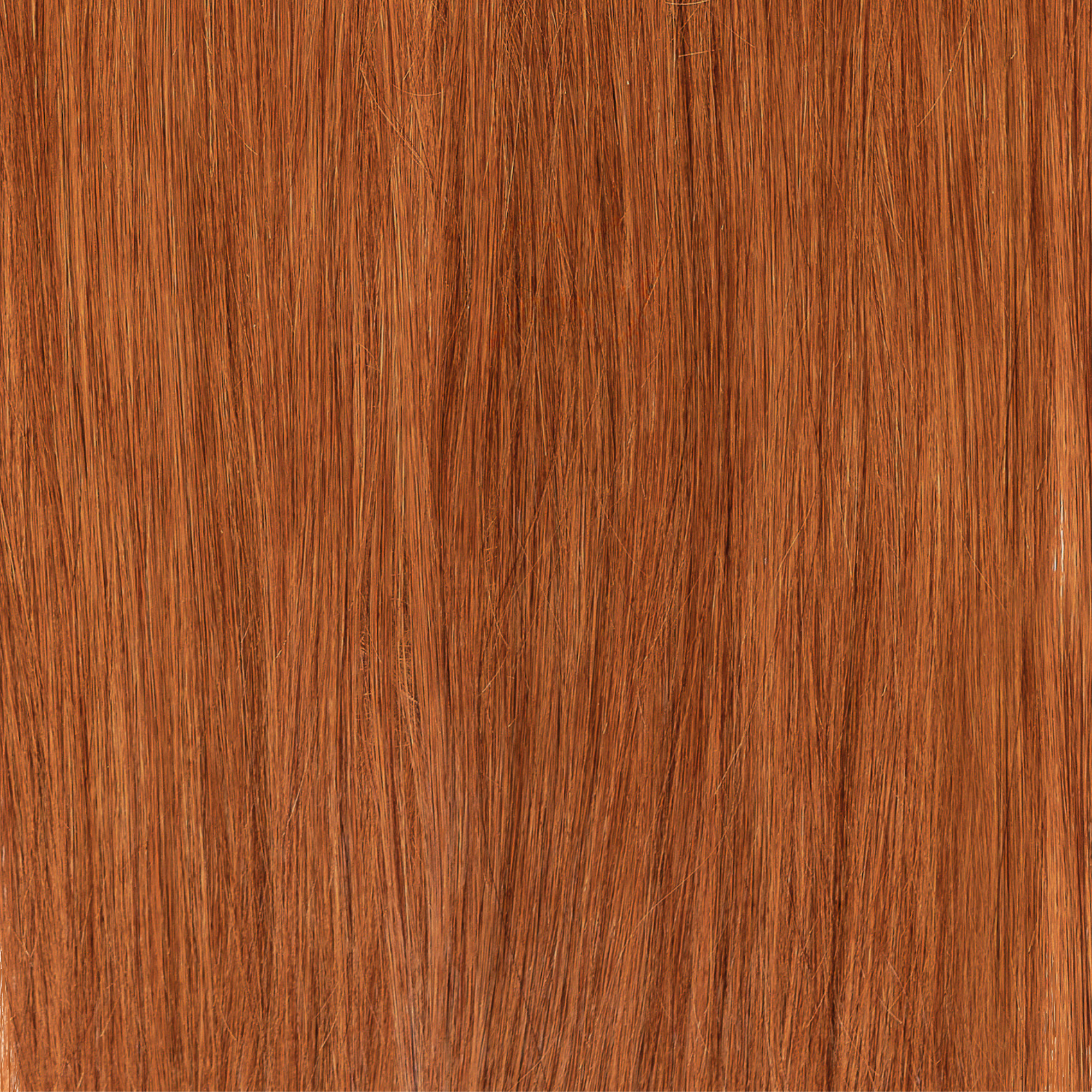
Hair Extension Removal: Techniques and Tips for Safe Removal
- Irene GilmanCan you take hair extensions out yourself? I get it—sometimes you love all about that extra volume and length. But how do you know when to remove hair extensions? Whether you’ve had them in for a few hours, weeks or months, removing your extensions the right way is super important to keep your natural hair in great shape. Let’s talk about the best way to remove hair extensions safely without all the drama. Trust me, you can do this!
Different Types of Hair Extensions
Before we get into some of the best hair extension removal techniques, let’s quickly talk about the different types of hair extensions you might have. Each one requires a slightly different approach when it comes to removal, so it's good to know what you're working with.
Clip-In Extensions

These from Atelier Extensions are the super easy, no-fuss extensions that you can pop in and out whenever you feel like it. You simply clip them in, and boom—you’ve got long, luscious hair.
Pros: Super fast to install and remove, no commitment.
Cons: If you don’t take care while removing them, they can cause tangles.
Tape-In Extensions

Tape-ins are semi-permanent and usually last a bit longer. The hair wefts are secured to your natural hair using double-sided tape.
Pros: Light and natural-looking, blend well with your natural hair.
Cons: Removal can be a bit tricky without the right products, and if you’re not careful, they can tug at your natural hair.
K-Tip Extensions

These involve keratin-tipped extensions that are fused to your natural hair with heat. They’re durable but require a professional to remove them safely.
Pros: Long-lasting and natural-looking.
Cons: Removal can be complicated without the right tools.
Weft Extensions

These extensions are sewn in, providing you with significant volume and length.
Pros: They last a while and provide a full, voluminous look.
Cons: You might need a pro to remove them to avoid damaging your hair.
Microlink Extensions

Microlinks use small beads to attach the extensions to your natural hair, without using any glue or heat.
Pros: Flexible and reusable, no heat involved.
Cons: Beads can be a little uncomfortable if not applied right, and they can take time to remove.
Preparing to Remove Your Extensions
Okay, so before you start pulling at your extensions, let’s get prepared. You’ll need a few things to make the process easier and safer:
- Extensions remover solution (for tape-ins or glued extensions)
- Wide-tooth comb for detangling
- Hair oil or conditioner to keep things smooth
- Pliers (if you’re working with beads or microlinks)
- Patience (I know, it sounds like a lot, but trust me, it’ll be worth it!)
Now that you’ve got all your tools together, let’s get started with removing.
Safely Removing Hair Extensions
Removing natural hair clip-ins doesn't have to be stressful if you take your time. Here’s the step-by-step for each type.
Clip-In Extensions
- Start by gently un-clipping each piece, beginning from the bottom and working your way up. Don’t rush!
- Take a wide-tooth comb and carefully detangle any knots that may have formed while they were in.
Check out this before and after hair extension removal!
Tape-In Extensions
- Apply a remover solution to the tape bonds (you can find special products designed for this). Allow it to rest for a few minutes to soften the adhesive.
- Gently peel the extensions off your natural hair. Be cautious not to pull too forcefully, as this could harm your hair.
-
If there’s any leftover tape residue, carefully remove it with a cotton pad and some oil or alcohol.
@estellelebourgeois_ the removal as requested, takes about 30-40 min🫶🏼#hairextensions #tapeinhairextensions #tapeinextensionsremoval #tapeinremoval #hairtapeinextensions #hairtok #tutorial #hairtutorial #haircare #removingtapeinextensionsathome ♬ original sound - Estelle Lebourgeois
K-Tip Extensions
This is one you’ll probably want to leave to the pros. They’ll use a special keratin remover to dissolve the bonds, then slide the extensions off without pulling on your natural hair.
@taryn856 This was easier than yall made it seem…. #diyktips #ktipextensions #diyextensions ♬ y o u l i k e i t - ➷。˚𝐬𝐚𝐯 ೃ࿔₊
Weft Extensions
- For sewn-in wefts, you’ll need to carefully snip the threads with scissors.
-
For beaded wefts, gently squeeze the beads with pliers to loosen them before sliding them off.
@mikayla__matt I feel bald 😂🥹👀 #fyp #viral #diy #extentions #hairtok #finehair #hairtransformation #youngmomsoftiktok ♬ original sound - Mikayla🤎
Microlinks
- To remove microlinks, use pliers to gently squeeze the beads and slide them off your natural hair. This may take some time, but be patient with your hair, it’s worth it!
- If the beads are tight, you might want to visit a stylist for a little help.
@ayo_marie_ IM SCRUBBING MY HEAD AS WE SPEAK #hair #hairextensions #hairextensionremoval #handtiedextensions #weftextensions #wefthairextensions #shorthair #longhair #extensions #hairextensionremoval #humanhairextensions ♬ original sound - Mia
Tips to Prevent Damage
Let’s talk about keeping your natural hair in good condition during the removal process. Here are a few pro tips to avoid damage:
- Take your time: Rushing through removal can lead to unnecessary breakage. Be patient and gentle with your hair.
- Don’t yank or pull: If the extensions feel stuck, stop and use an extension remover solution or seek professional help. Never tug!
- Give your hair a break: After removal, it’s a good idea to let your natural hair rest before adding in new extensions or using heat styling tools.
Hair Care After Removal

Okay, your extensions are gone—but now it’s time to show your natural hair some much-needed love. It might feel a little different after having extensions in for a while, so taking proper care of it is key to making sure it stays healthy, shiny, and strong. Here’s how to pamper your hair post-removal.
1. Wash and Condition:
First things first—give your hair a thorough wash. If you had tape-ins, you might have needed to use a specialized extension remover to break down any sticky residue before shampooing, you’ll want to remove any glue, tape residue, or product buildup left behind from your extensions. Use a gentle, sulfate-free shampoo to avoid stripping your natural oils and scrub clean your scalp. Once that’s done, follow up with a rich, moisturizing conditioner to hydrate your hair. Look for products with nourishing ingredients like argan oil, shea butter, or jojoba oil. These will give your hair the hydration it needs to bounce back.
2. Detangle Carefully:
After your hair is clean, it’s time to detangle it. But no rushing! Grab a wide-tooth comb or a wet brush (I swear by the Tangle Teezer Wet Detangler for this). Start from the ends of your hair and work your way up to the roots, gently separating any knots. Take your time, and don’t yank—this is key to preventing unnecessary breakage. If you feel like your hair is a bit extra dry or tangled, try a leave-in conditioner or a detangling spray like Ouai Leave-In Conditioner to make the process smoother.
3. Apply Hair Oil:
Now’s the time to treat your hair to some love! Hair oils can help restore moisture, add shine, and give your hair that healthy glow. Depending on your hair type, you can go for something lightweight like Moroccanoil Treatment for fine hair, or something more intensive like Kérastase Elixir Ultime if your hair is on the thicker side. Apply a few drops to damp hair, concentrating on the ends where it tends to be drier. This step will help seal in moisture, leaving your hair feeling silky and smooth.
4. Deep Condition:
This step is essential, especially if your hair feels brittle, and lackluster after removing your extensions. Apply a deep conditioning mask once or twice a week to restore moisture and nourishment. Products like Olaplex No. 3 is a great option. These treatments penetrate deeper into the hair shaft, helping to repair damage from the removal process and restore your hair’s softness and strength.
5. Give Your Hair a Break
I know, I know—you probably can’t wait to jump back into styling, but your hair will really benefit from a break after all the extension action. Try to go a few days without using heat styling tools. Let your natural texture shine through and give your strands time to recover. If you absolutely can’t resist, always use a heat protectant spray (like Living Proof Restore Instant Protection Spray) to minimize damage.
6. Keep Your Scalp Healthy
Don’t forget about your scalp! It’s easy to overlook, but your scalp health is super important for hair growth and overall health. Give your scalp a gentle massage with your fingertips or use a scalp scrub like Briogeo Scalp Revival Charcoal + Coconut Oil Micro-Exfoliating Shampoo. This will help increase blood circulation, remove product buildup, and keep things fresh.
Taking care of your hair after removal is crucial for maintaining its health and strength. With the right products and a little TLC, your natural hair will bounce back and look just as fabulous as it did when you first added those extensions. So, go ahead, treat your hair to some love—it deserves it!
Consulting a Professional

Can you take out your own hair extensions? While removing your hair extensions at home can definitely be done, there are times when it’s better to call in the pros. A hairstylist or extension specialist can save you a lot of stress and potential damage, especially with certain types of extensions. Here are some situations when you might want to consider seeking professional help.
1. When to Seek Professional Help
Certain extension types—like K-tip or weft extensions—are best removed by someone with experience. For K-tips, the keratin bonds can be tricky to break down properly without damaging your natural hair, and removing wefts involves cutting through sewn threads or using special tools to avoid any unwanted breakage. If you're not comfortable removing tape-ins yourself, a professional can ensure the adhesive is dissolved properly and that no residue is left behind.
If you notice any discomfort while removing the extensions, or if the process feels more complicated than you expected, it might be time to schedule a visit to your stylist.They have the proper tools, products, and techniques to do the job safely and effectively.
2. Addressing Common Issues:
Removing extensions isn’t always a flawless process—sometimes you might run into a few snags. Here are a couple of issues you might encounter, and how to handle them.
- Matting and Tangles: If you’ve worn extensions for a while, you might notice some matting, especially near the roots. This can happen when hair extensions get tangled with your natural hair, particularly around the bead or tape areas. Don’t panic!
- Use oil: Apply a small amount of argan oil or coconut oil directly to the matted area. This will help soften the tangles and make them easier to work through.
- Gently detangle: Start by gently working the tangles out with a wide-tooth comb, being extra careful not to pull too hard or you could cause breakage. Work your way from the tips up, just like with the rest of your hair.
- Take it slow: If the tangles are really stubborn, try applying a leave-in conditioner or detangling spray and let it sit for a few minutes before trying again.
3. Itchy Scalp
Itching is pretty common after removing extensions, especially if they’ve been in for a while or if the adhesive was used. The scalp can get irritated from the extension glue, tape, or even the weight of the extensions pulling on your natural hair. Here’s how to soothe an itchy scalp:
- Use a soothing shampoo: Opt for a shampoo designed to calm an irritated scalp, like Nizoral Anti-Dandruff Shampoo or Paul Mitchell Tea Tree Special Shampoo. These will help relieve itching and cleanse your scalp without stripping it.
- Scalp massage: Try massaging your scalp gently with your fingertips to promote blood circulation and help release any product buildup. You can also use a scalp brush for extra relaxation.
- Moisturize with oils: If your scalp feels dry and irritated, apply a lightweight oil like jojoba oil or tea tree oil (diluted with a carrier oil) to soothe and hydrate the skin.
If the itchiness persists or becomes unbearable, or if you notice any redness or swelling, it’s a good idea to consult with a professional to rule out any allergies or irritation that may have developed during the extension process.
By knowing when to call in the experts and how to handle common problems like tangles and itchy scalps, you can avoid unnecessary stress during the removal process. A little extra care goes a long way in keeping your hair healthy and strong, so don’t hesitate to seek out help when you need it!
What we think:
Can you remove hair extensions yourself? Removing hair extensions doesn’t have to be a stressful process—it’s all about taking the right steps, using the right products, and knowing when to call in a professional. Whether you're rocking clip-ins or tape-ins, following the proper removal techniques will keep your natural hair healthy and strong. Remember to treat your hair with TLC after the extensions are gone, from moisturizing shampoos to nourishing oils, and don't forget about your scalp's health too.
And if things feel a bit too complicated or if you run into any tangles or discomfort, don't hesitate to seek professional help. After all, your hair deserves the best hair extension remover
and care at every stage!
With a little patience and the right tools, you'll be able to enjoy your natural hair in all its glory—without the stress of removing extensions. So, go ahead, give your hair the love it deserves, and enjoy the fresh, extension-free look! If you’re on the market for a brand new set, buy hair extensions with us, our professionals can help you every step of the way- visit atelierextensions.com!
